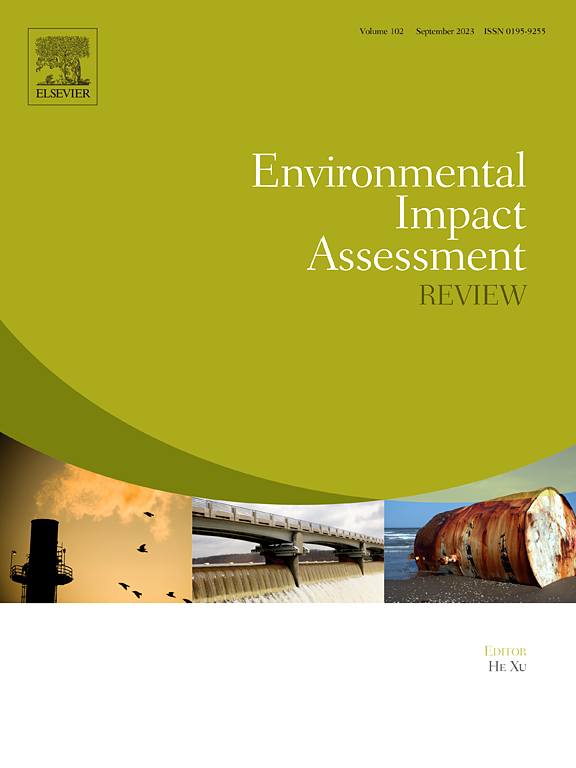竹浆作为中国纸浆工业的可持续替代品:经济和环境评价
IF 9.8
1区 社会学
Q1 ENVIRONMENTAL STUDIES
引用次数: 0
摘要
随着中国面临日益严重的造纸原料供应危机,人们对使用竹浆作为可持续替代品的兴趣日益浓厚。本研究采用生命周期评价法(LCA)和生命周期成本法(LCC)对中国竹浆生产的环境和经济绩效进行了评价,并与木浆生产的结果进行了比较。在环境影响方面,中国竹浆生产在不同地区表现出差异。竹浆的环境负担比木浆低23.6%至高62.8%,主要是由于制浆和碱回收阶段的差异。在经济效益方面,竹浆比木浆更经济。每吨竹浆的生命周期成本比木浆低211.0美元,成本降低19.3%。此外,还设计了未来技术进步的几个场景,表明采用先进的制浆技术可以将竹浆的环境影响降低9.2% - 12.6%。在最佳工艺条件下,竹浆与木浆对环境的影响无显著差异。这表明竹浆有潜力成为解决中国造纸原料危机的可持续解决方案,同时也有助于实现碳中和目标。本文章由计算机程序翻译,如有差异,请以英文原文为准。
Bamboo pulp as a sustainable alternative in China's pulp industry: Economic and environmental assessment
As China faces a growing crisis in paper raw material supply, there is increasing interest in using bamboo pulp as a sustainable alternative. This study evaluates the environmental and economic performance of bamboo pulp production in China using Life Cycle Assessment (LCA) and Life Cycle Costing (LCC), and compares the results with those of wood pulp. In terms of environmental impacts, bamboo pulp production in China shows variability in different regions. The environmental burden of bamboo pulp ranges from 23.6 % lower to 62.8 % higher compared to wood pulp, primarily due to differences in the pulping and alkali recovery stages. In terms of economic benefits, bamboo pulp is more economical than wood pulp. The life cycle cost per ton of bamboo pulp is $211.0 less than that of wood pulp, representing a reduction of 19.3 % in cost. Furthermore, several future technological advancement scenarios were designed, showing that increased adoption of advanced pulping technologies could reduce the environmental impact of bamboo pulp by 9.2 %–12.6 %. Under an optimal technology scenario, there is no significant difference in environmental impact between bamboo pulp and wood pulp. These demonstrate the potential of bamboo pulp to be a sustainable solution to China's papermaking raw material crisis, while also contributing to carbon neutrality goals.
求助全文
通过发布文献求助,成功后即可免费获取论文全文。
去求助
来源期刊

Environmental Impact Assessment Review
ENVIRONMENTAL STUDIES-
CiteScore
12.60
自引率
10.10%
发文量
200
审稿时长
33 days
期刊介绍:
Environmental Impact Assessment Review is an interdisciplinary journal that serves a global audience of practitioners, policymakers, and academics involved in assessing the environmental impact of policies, projects, processes, and products. The journal focuses on innovative theory and practice in environmental impact assessment (EIA). Papers are expected to present innovative ideas, be topical, and coherent. The journal emphasizes concepts, methods, techniques, approaches, and systems related to EIA theory and practice.
 求助内容:
求助内容: 应助结果提醒方式:
应助结果提醒方式:


